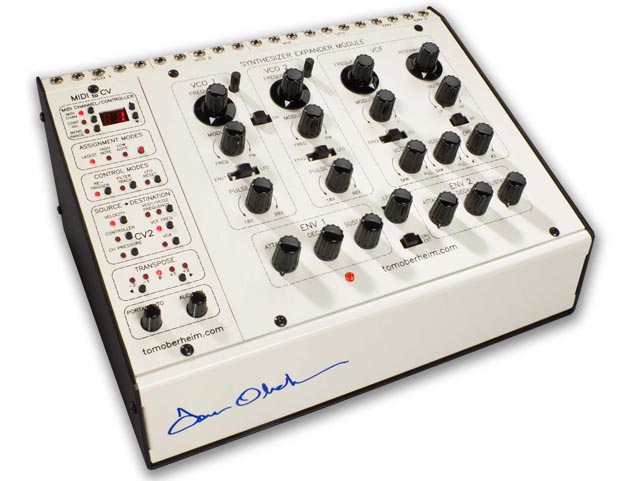The roster of Oberheim keyboards is legendary and the groundbreaking Synthesizer Expander Module, the SEM, was the sonic engine that started it all. Whether standing alone and singing via CVs and gates, or grouped in a Tolex-covered case with a keyboard to become a Two-Voice with a mini-sequencer, a Four-Voice, or the rare and godlike Eight-Voice, the SEM produces a gutsy, unique palette of sounds that have always been gotta-have-‘em parts of the serious keyboardist’s toolkit.
Now, the SEM is available again, reborn in four great models directly from the hands of its creator. All internal components are exactly the same as they were in the original units, unless unavailable. The sound is the same amazing trademark aural experience that made the SEM a staple in a vast range of musical styles and projects.

Tom Oberheim: “Yes, it’s true: I am back in the synth business and to start out I have reissued my very first analog synth– the Synthesizer Expander Module (SEM). This new SEM module is pretty much the same as the original, that is to say 100% analog! True voltage controlled oscillators, the classic SEM multi-mode filter, analog VCA, analog envelope generators and LFO. Did I say it is 100% analog? In fact, I made the circuitry as close to the original as possible.“
This initial release of the new SEM consists of three versions:
1) NEW! SEM-PRO. SEM with MIDI to CV Converter and integrated Patchpanel. This version combines the features of the MIDI to CV version (see below) with a 21-jack patchpanel and is personally autographed by me. The U.S. price is $1199.
2) SEM with Patchpanel. All internal SEM connections are brought out to 3.5mm minijacks – all 33 of them. The basic connections are a one-volt-per-octave VCO control voltage and a standard 0 to +5 volt gate signal. On this version of the SEM, there is no MIDI input. The U.S. price is $899.
3) SEM with MIDI to CV Converter. This version includes a high precision MIDI to CV Converter that has been specifically designed to allow MIDI to control the SEM, and has additional features that make use of the SEM’s external inputs.
More details on specifications and availability here…
